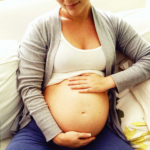Although primarily used to treat schizophrenia and other psychotic disorders, the newer “atypical” antipsychotic agents are now used widely to treat a spectrum of psychiatric disorders, including major depression, bipolar disorder, PTSD and other anxiety disorders. While the reproductive safety of the older typical antipsychotic drugs, such as haloperidol (Haldol) and perphenazine (Trilafon), is supported by data accumulated over the past 40 years, we have far less data on the newer atypical agents: olanzapine (Zyprexa), risperidone (Risperdal), quetiapine (Seroquel), aripiprazole (Abilify), ziprasidone (Geodon), and clozapine (Clozaril).
Thus far, most of the data on the reproductive safety of atypical agents has been limited to manufacturers’ accumulated case series and spontaneous reports, which are inherently biased: people who experience a poor outcome or an adverse event are much more likely to report having used a particular medication than people who have not experienced any problems. Among the 242 reports of olanzapine-exposed pregnancies collected by the manufacturer, there was no increase in risk of major malformations above baseline. Of 523 clozapine-exposed pregnancies, there were reported 22 “unspecified malformations.” In 151 reported quetiapine-exposed pregnancies, 8 infants were observed to have congenital anomalies. Eight malformations were reported among the infants born to approximately 250 women taking risperidone; however, pregnancy outcomes were not known in many of these cases reported to the manufacturer. Taken together, these reports do not suggest an increase in the risk of major malformation above the baseline 2% to 4% risk of malformations seen in the general population, nor do they indicate any specific pattern of abnormalities among drug-exposed infants. While this information has not suggested any particular concerns regarding the use of atypical antipsychotic drugs in pregnancy, we can make only limited conclusions based on this type of information.
The first published prospective study on the reproductive safety of the atypical agents comes from the Motherisk Program in Toronto and provides some reassuring data regarding the risk of malformations in infants exposed to these drugs. (McKenna et al, 2005) In this study, investigators prospectively followed a group of women taking olanzapine (n=60), risperidone (n=49), quetiapine (n=36), or clozapine (n=6) during pregnancy. All of the 151 women completing the study had taken one of these agents during the first trimester, and 48 were exposed to drug throughout the pregnancy. A comparison group of 151 healthy pregnant women who had been exposed to non-teratogenic agents (including hair dyes, cold medications, antacids, antibiotics, acetaminophen, and antacids) were also followed.
More women in the exposed group elected to terminate their pregnancy (9.9%) than in the comparison group (1.3%); rates of spontaneous abortion were also higher in the exposed group (14.5%) than in the comparison group (8.6%), although this finding was not statistically significant. The rates of major malformations were not statistically different in the two groups; one child in the exposed group was born with a malformation (0.9%) versus two (1.5%) in the comparison group. There were no differences between the two groups in terms of mean gestational age or birth weight; however, 10% of the exposed infants were low birth weight, as compared to only 2% of the comparison group. (This finding may be attributed to differences in lifestyle characteristics between the two groups; the exposed women were more likely to smoke and to use alcohol and were less likely to take vitamins.) There were no differences between the two groups in rates of complications at labor or neonatal complications.
This study did not evaluate the long-term neurobehavioral effects of exposure to these agents. The study is also limited by its small sample size; the authors estimate that approximately 800 pregnancies would be required in each group in order to detect a two-fold increase in the risk of relatively common malformations. Still, this is the first prospective study that complements exists reports from the manufacturers. Although this study is encouraging, given the prevalence of reproductive-age women taking these agents, it would be ideal if the industry carried out post-marketing studies to provide the number of cases needed to reliably estimate risk. Such studies may soon be mandated by the Food and Drug Administration.
Decisions regarding the use of these and other psychotropic drugs must be made on a case-by-case basis. Given the limited data regarding the reproductive safety of the atypical agents, patients taking an antipsychotic drug may choose to discontinue their medication or to switch to a better characterized conventional anti-psychotic agent, like perphenazine or haloperidol. However, many women do not respond as well to the typical agents or have such severe illness that making any change in their regimen may place them at significant risk. While the Motherisk data are not a guarantee of safety, they do provide information in combination with the manufacturers’ date that is moderately reassuring. Thus, women and their clinicians may choose to use atypical agents during pregnancy in order to sustain functioning, while acknowledging information regarding their reproductive safety remains incomplete.
Lee S. Cohen, MD
Ruta M. Nonacs, MD, PhD
McKenna K, Koren G, Tetelbaum M, Wilton L, Shakir S, Diav-Citrin O, et al. (2005). Pregnancy outcome of women using atypical antipsychotic drugs: a prospective comparative study. J. Clin. Psychiatry 2005;66(4):444-9
*This post was originally published as an article in the December 2005 Newsletter.








Leave A Comment